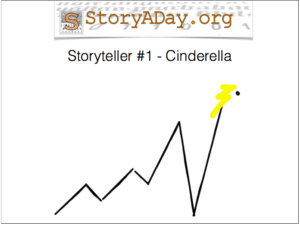How many times have you made a change in your life, only to backslide? Do you ever wonder will happen to a story’s character after the credits have rolled?
The story is over when the character has mastered the challenge. But the story, for your character, is not really over. They live their life, in the shadow of everything that came before.
The Prompt
Write the story of a character’s NEXT struggle, after the ‘happily ever after’
Tips
- You could take a character from someone else’s stories, or from a folk tale (write a sequel to Cinderella or Gone Girl)
- You could write the sequel to a story you’ve written in the past
- Questions to ask yourself: what did the character have to overcome to succeed in the original story? What did they desire? How did they suddenly become sure they could win? What has changed, since then? Are they struggling with the same thing, in a new setting? Are they struggling with new issues, as a results of the original win?
- For example: Cinderella was struggling against her step-family, who wanted her to fail. What will life be like for her in the castle? Her new husband presumably wants her to succeed at being Queen. Does she have what it takes? Does everyone in the castle want her to succeed? Is there a big event coming up that she must host? What lessons can she take from her first challenge into this new one? Is she battling feelings of insecurity as well as outside forces?
- In my story The Girl Who Circumnavigated The Globe In An Act Of Her Own Making, my main character’s desire is to communicate; to present herself to the world on her own terms. Within the scope of that one story, she does it. She feels good at the end of the story. She has a plan. But what about when she next goes back to Earth? Will she see her ‘victory’ as something fanciful and worthless? How will she deal with the frustration of being prejudged by everyone all the time, again? I could write that story today.
Go!





